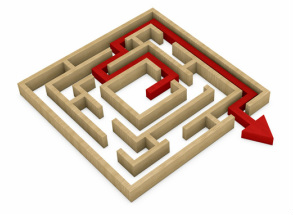



| LESSON 1 (Page 443)
1. A wave travels 0.3m in 3.5 s and has frequency of 4.6 Hz. Calculate the
wavelength.
2. Calculate the frequency of red light waves that have a wavelength of 750 nm.
3. A wave on a string has frequency of 0.83 Hz and a wavelength of 0.56 m. Determine the wavelength when a new wave of frequency 0.45 Hz is established on this string and the wave speed does not change.
LESSON 2 (Page 458)
1. The speed of light in a medium is measured to be 3.0 x 10^8 m/s. Calculate the index of refraction of the medium.
2. Light travels through an optical fibre (n=1.44) to air. The angle of incidence of light in the fibre is 30 degrees. Calculate the angle of refraction outside the fibre.
LESSON 3 (Page 469)
1. Under what condition is the diffraction of waves through a slit maximized?
2. Two speakers are 1.0 m apart and vibrate in phrase to produce waves of wavelength 0.25 m. Determine the angle of the first nodal line.
3. What conditions are necessary for interference pattern from a two-point source to be stable?
LESSON 5 (Page 484)
1. When a monochromatic light source shines through a double slit with a slit separation of 0.20 mm onto a screen 3.5 m away, the first dark band in the pattern appears 9.1 mm from the centre of the bright band. Calculate the wavelength of the light.
2. Two slits are separated by 0.30 mm and produce an interference pattern. The fifth minimum is 12.8 x 10^-2 m from the central minimum. The wavelength of the light used is 4.5 x 10^-7 m.
Determine the distance at which the screen is placed.
3. The second-order dark angle in a double-slit experiment is 5.4 degrees. Calculate the ratio of the separation of the slits to the wavelength of the light.
LESSON 6 (Page 511)
1. An extremely thin film of soapy water of = 1.35 sits on top of a flat glass plate of =1.50. The soap film has
a red colour when the incident light reflects perpendicularly off the surface of the water. Determine the thickness of the film when = 6.0 x 10 ^-7 m.
2. Use diagrams to explain why the top of a soap film appears bright from one side and dark from the other when light is transmitted through it.
LESSON 7 (page 519)
1. Light with a wavelength of 794 nm produces a single-slit diffraction pattern in which the ninth dark fringe lies at 6.48 cm from the direction of the central maximum. Determine the width of the slit.
2. A slit of width 0.15 nm is located 10.0 m from a screen. Light with a wavelength of 450 nm passes through this slit. Determine the distance between the first and the third dark fringes on the screen.
LESSON 8 (Page 525)
1. A diffraction grating has 2800 lines/cm. Determine the distance between two lines in the grating.
2. A square diffraction grating of width 2.0 cm contains 6000 slits. At what angle does blue light with a wavelength 450 nm produce the first intensity
maximum?
LESSON 9 (Page 531)
1. The light used in a CD player has a frequency of about 5.0 x 10 ^14 Hz.
Determine its wavelength.
2. The human eye is most sensitive to light with a wavelength of about 550 nm. Calculate this light’s frequency.
3. Some cordless telephones use radio waves with frequency near 2.4 GHz to transmit to their base station. Calculate the wavelength of these waves.
LESSON 10 (Page 537)
1. The sky often looks very different when viewed through polarizing sunglasses. Explain what causes
this effect.
2. Using what you know, explain why the sky appears blue.
|




 RSS Feed
RSS Feed